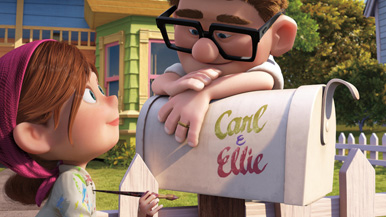|
|
2010 Calvin Awards: Best SceneFebruary 9, 2010
The category I enjoy the most each year is Best Scene, because it's the most novel choice as well as the one that is hardest to predict. In recent years, we've celebrated Anton Ego's unexpected face turn into a euphoric food critic, the startling events that revealed the fate of the passengers of United 93, and Heath Ledger's magical ability to make a pencil disappear. There is simply no way to anticipate which scene will strike a chord with the largest percentage of our voters, as there are literally thousands of available options. Despite this potential for variation, our selection for Best Scene this year is a runaway winner.
Trauma is the buzz word in the Best Scene category this year. Two of the most harrowing selections represent our third and fourth choices in the category. The opening scene of Inglourious Basterds quickly establishes Christoph Waltz's character as a terrifying soldier in the Nazi regime. Starting with his innocuous request to sample some of a dairy farmer's delicious milk, he carefully doles out information about who he is, what he represents and why a person should regret any attempt to protect enemies of the state by hiding them in the floorboards. Waltz's Hans Landa is the face of evil in Inglourious Basterds and his chilling display of professionalism deftly establishes what Aldo Raine's men will be forced to overcome. In an oddly similar fashion, The Hurt Locker's car bomb defusing sequence has the same effect with one key difference. Sergeant First Class William James is one of the best in the world when it comes to disabling bombs, but the people he scares the most are not the enemy. Instead, it's his own troops, particularly two allies who grow to fear his cowboy behavior. While still lamenting the death of the previous person to command James' post, the two men watch in horror as James proceeds to take off all of his protective armor. The reckless soldier determines that having maximum maneuverability is more important than physical safety, which makes them wonder if he has a God complex or a death wish or both, the underlying theme of the entire movie as it proudly submits James as Exhibit A of how the rest of the world stereotypes the American soldier. James fails to take the bait on a fake bomb trigger and eventually traces his way from the trunk of the car all the way up to the windshield wiper connection as he attempts to solve the puzzle of what will prevent the bomb from going boom. It is a harrowing window into the everyday life of those who disable bombs for a living and clearly among the most gripping scenes of the year.
|

|
|
|

|
Thursday, October 31, 2024
© 2024 Box Office Prophets, a division of One Of Us, Inc.


